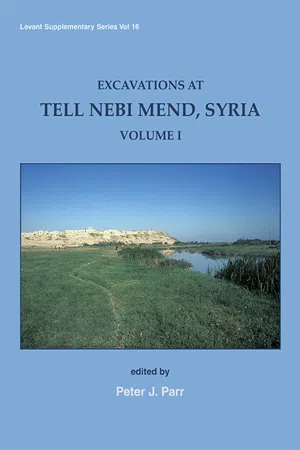
- 408 pages
- English
- PDF
- Available on iOS & Android
About This Book
The archaeological site of Tell Nebi Mend, a tell on the Homs plain in present-day Syria, is universally recognised as the location, first, of Qadesh (or Kadesh), where, in c. 1286 BC, the armies of Ramesses II of Egypt and Muwatalli II of Great Hatti fought the most famous battle of pre-classical antiquity, and, second, of Laodicea ad Libanum, founded most probably in the 3rd century BC as the capital of a district of the Seleucid empire. Collaborative excavations undertaken over 12 seasons aimed to fill a major gap in archaeological knowledge between the northern and southern Levant and to develop an understanding of the archaeology and early history of the Levantine Corridor independent of, and supplementing, that based on Palestinian and Biblical research. The primary aim was to obtain as complete a sequence as possible of cultural and environmental data, sampling all periods of the site’s occupation, which included Neolithic, Bronze Age, Iron Age and Hellenistic/Roman deposits, enclosures and defenses spanning the 7th millennium BC to the mid-1st millennium AD. A definitive classification of all types of Syrian pottery over two millennia was established, together with a much longer sequence of pottery, stone, metal and bone implements, terracottas and other cultural remains, accompanied by a wealth of environmental data and a series of radiometric dates.The earliest settlement so far discovered at Tell Nebi Mend dates to the first half of the 7th millennium BC and is the subject of this volume. Five phases of occupation were recognised with architectural features including, at different times, house structures and remains of larger, probably communal, buildings, along with remains of plaster, floor surfaces, fire and rubbish pits and burials, followed by large-scale abandonment. More than 2000 sherds of Neolithic pottery and 1400 flint and obsidian artefacts were recovered.
Frequently asked questions
Information
Table of contents
- Cover
- Title Page
- Copyright Page
- Contents
- List of figures, tables and plates
- Preface
- List of contributors
- Part I: General Introduction
- Part II: The Pottery Neolithic Occupation
- Part III: The Enclosure
- Bibliography
- Colour Plates